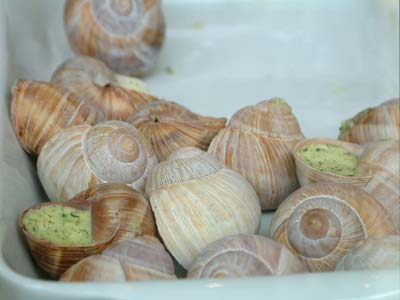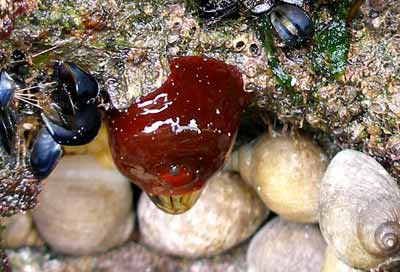
Varieties of edible snail include the Roman, or vineyard snail (also known as the apple snail) and the petit gris, or common snail.
Snake gourds are bright green, thin-skinned gourds which can grow as long as 2 meters (6 ft). Since they have a tendency to curl they can frequently be seen with rocks tied to them to keep them straight. They should be rubbed with salt to remove the downy surface of the skin and can then be cut open, the central core of seeds removed and then cubed or sliced for adding to stews and rasams. They do not have a great deal of flavour.
The northern snakehead fish, native to India, South East Asia, China and Africa. It is believed to be able to "walk on land". In fact, it has a rudimentary lung which enables it to live out of water, but it is unable to go wandering around the neighbourhood. It is reputed to have an excellent flavour.

A variety of sea anemone eaten in France. The tentacles are removed and they are then turned inside out for cleaning. The walls of the body cavity are cut into pieces, dipped in batter and fried or used in soups.
The freshwater or snake blennie is a small, scaleless, migratory fish about 10-15 cm (4-6 inches) long with mild, white flesh which can be cooked in the same way as whitebait or used in soups. More commonly refers to a hare. It also means runny to describe omelettes.
The snake palm is a plant with a glutinous, starchy tuber which is used to make translucent shirataki noodles and konnyaku, a black bean curd.